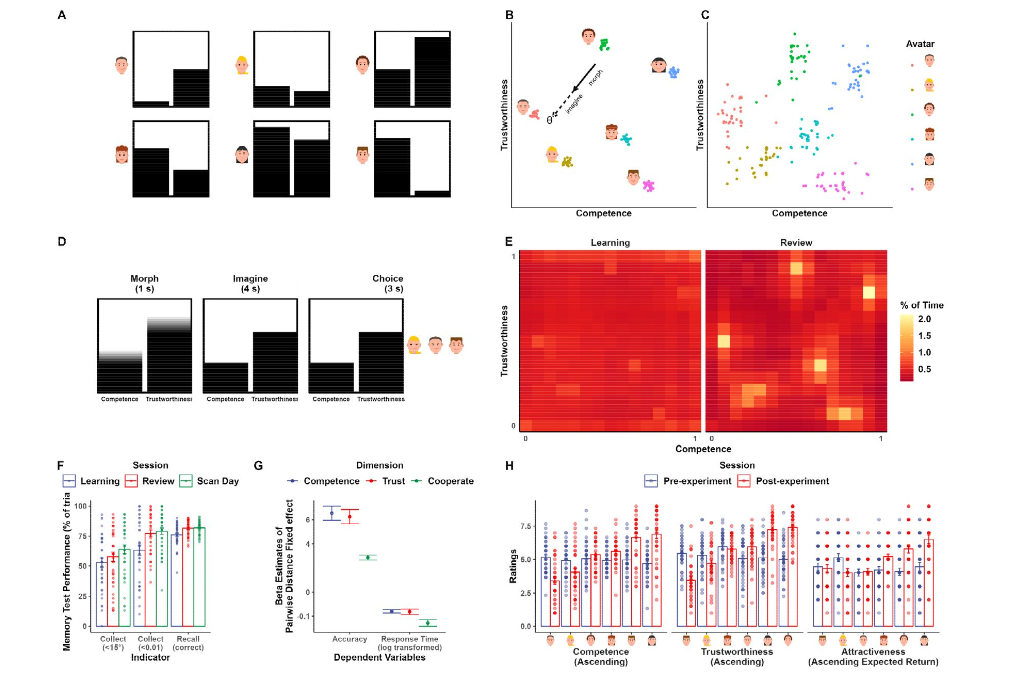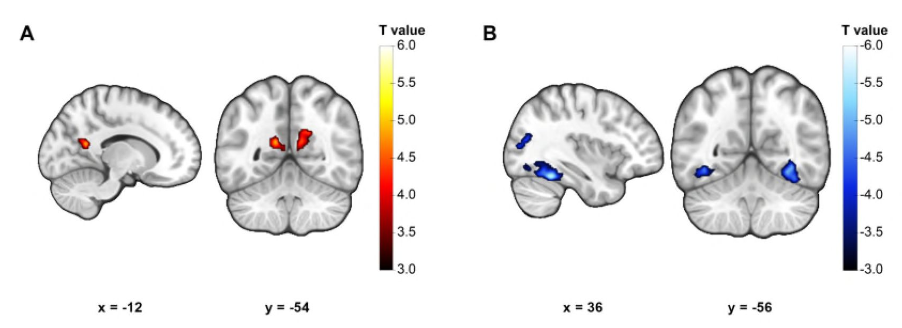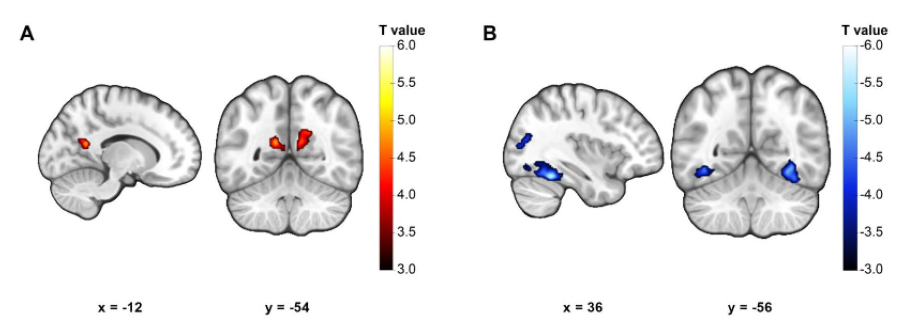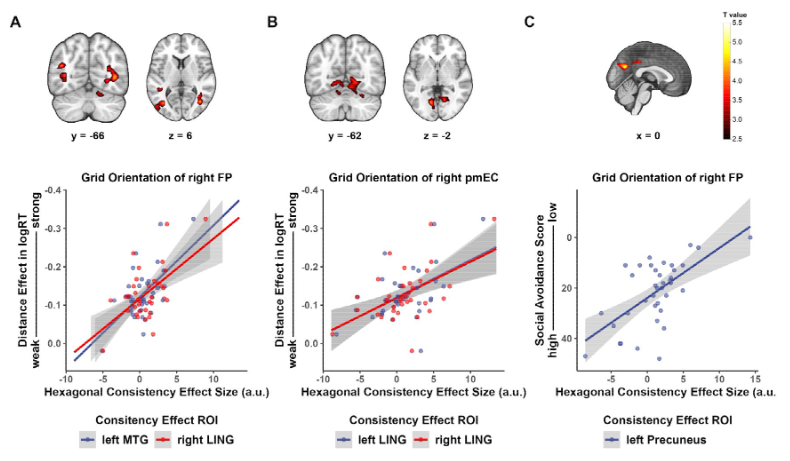eLife: Chao Liu’s group reveals the social cognitive map for integrating social information in the human brain and its neural mechanism
On June 14, 2024, Chao Liu’s group at the State Key Laboratory of Cognitive Neuroscience and Learning, Department of Psychology, Beijing Normal University (BNU) and the IDG/McGovern Institute for Brain Science published an innovative research result in the international journal eLife entitled “Social navigation: distance and grid-like codes support navigation of abstract social space in human brain”, revealing how the human brain uses spatial coding mechanisms to construct and navigate abstract social spaces. This study provides new insights into how the brain processes and integrates social information.
Zilu Liang, a master’s degree graduate from the group, is the first author of the paper, and Prof. Chao Liu from Beijing Normal University and Prof. Shaozheng Qin from Beijing Normal University are the co-corresponding authors. Co-authors of the paper include master’s graduates Simeng Wu and Jie Wu from the group, and Prof. Wenxu Wang from Beijing Normal University.
In everyday life, individuals need to accurately process information about others to form inferences about their personality and behavior. Such inferences are usually based on two basic dimensions: warmth and competence. The warmth dimension reflects the intentions and trustworthiness of others, whereas the competence dimension relates to the control of others’ resources. These dimensions form a “social cognitive map” that helps us organize and understand our social environments and guides our actions and decisions in social networks. However, the neural basis of these cognitive dimensions is still not well understood. Therefore, this study focuses on how spatial coding mechanisms help the human brain to construct such social cognitive maps beyond the physical environment.
In this study, two key social cognitive dimensions were modeled by designing an investment game. In the game, participants take on the role of investors who determine each other’s social value by assessing the investee’s rate of return (a reflection of decision-making ability) and rate of return (a reflection of the investee’s trustworthiness). Together, these two metrics determine the investee’s value in society.
Modeled after the coordinate system of physical space, six avatars of varying abilities and trustworthiness are placed in a 1 × 1 cell map of social values (Figs. 1A, 1B). Participants were tested on a series of tasks after learning the social values of each character. Simultaneously, the study used functional magnetic resonance imaging to monitor brain activity.

Figure 1. Experimental design and behavioral results
Behavioral-level analyses revealed that participants were able to successfully reconstruct the socio-cognitive map and that performance on the task improved significantly over time (Figures 1C, 1E, 1F).
In terms of brain imaging, the grid-like activity observed in prefrontal and internal olfactory cortical regions suggests that the grid coding mechanism also plays a key role in navigating social space (Fig. 2). In addition, the distance traveled on the socio-cognitive map was positively correlated (marginally significant) with the activity in two brain regions in the precuneus, while it was significantly negatively correlated with the activity in the bilateral fusiform gyrus and the right middle occipital gyrus (Fig. 3).

Figure 2. Grid-like activity in prefrontal and inner olfactory cortical regions

Fig. 3. Neural representation of Euclidean distance on social value maps
Analyses of brain-behavior correlations further revealed significant correlations between grid coding intensity and behavioral expressivity and social avoidance tendencies. In particular, the intensity of grid-pattern activity in the temporal lobe, especially in the left middle temporal gyrus and right lingual gyrus, showed a significant positive correlation with the distance effect (Figs. 4A, 4B). In addition, the intensity of grid pattern activity in the left region of the posterior cingulate cortex (PCC) showed a significant negative correlation with individuals’ social avoidance scores (Fig. 4C). This suggests that the neural encoding of social cognitive maps is not only similar to the encoding mechanisms in physical spatial navigation, but is also strongly correlated with an individual’s social skills.

Figure 4. correlation between grid coding strength and behavior
In summary, this study not only reveals the neural mechanisms behind social cognitive maps, but also demonstrates how these mechanisms are linked to an individual’s social behavior and psychological traits. These findings provide new insights into our understanding of how the brain navigates effectively in social environments, and offer new clues for future research on the neural basis of psychological conditions such as social cognitive impairment and social anxiety.
This research is supported by the Science and Technology Innovation 2030 – “Brain Science and Brain-like Research” Major Program, the National Natural Science Foundation of China, and the National Social Science Foundation of China.
Research paper information: Liang Zilu, Wu Simeng, Wu Jie, Wang Wenxu, Qin Shaozheng, Liu Chao (2024) Social navigation: distance and grid-like codes support navigation of abstract social space in human brain eLife 12:RP89025.
Lab Website: Welcome to Social & Affective Neuroscience lab (bnu.edu.cn)

